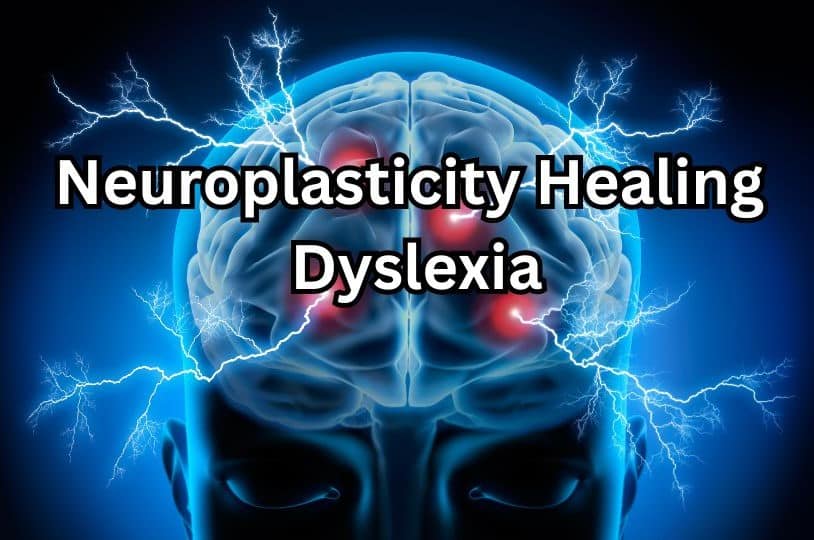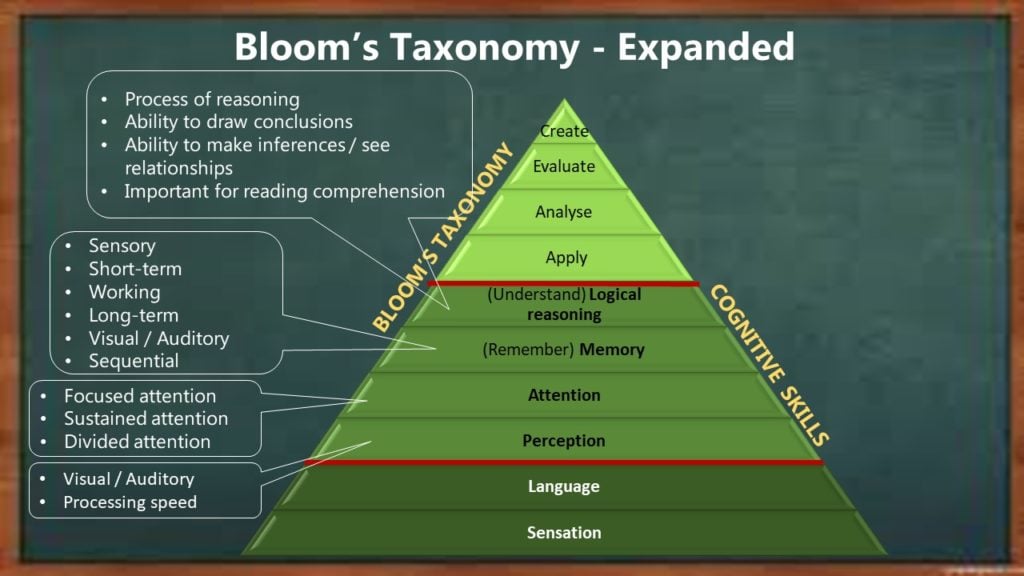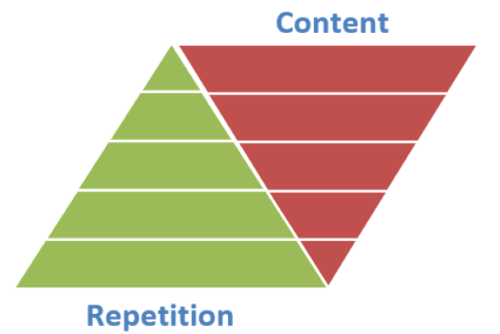
In Part 2 of Neuroplasticity Healing Dyslexia, we go beyond the science of brain plasticity to explore what actually drives change: cognitive training and proven learning principles. From the myth of the “one cause” theory to the critical role of task loading, repetition, and automaticity, this article explains why dyslexia can’t be solved with phonological awareness training alone. The solution lies in training the whole brain—and doing so the right way.
We specialize in helping children overcome the symptoms of dyslexia. Book a free consultation to discuss your child’s learning needs.
.
Table of contents:
- Six blind men and an elephant
- Cognitive deficits underpin reading failure
- Cognitive training holds the key
- Cognitive training falls into disrepute
- The importance of learning principles
- Conclusion
Six blind men and an elephant
Six blind men encountered an elephant. The first bumped into the elephant’s sturdy side and declared it a wall. The second grasped the tusk—“so very round and smooth and sharp”—and called it a spear. The third held the trunk and swore it was a snake. The rest described the elephant as a tree (the leg), a fan (the ear), and a rope (the tail).

This ancient parable is often used in learning disabilities to illustrate the fragmented nature of dyslexia research. There is no shortage of studies on learning disabilities—especially dyslexia—but the theories, assessments, and interventions are so labyrinthine and contradictory that one is tempted to throw up one’s hands in confusion (Spear & Sternberg, 1986; MacConville, 2007; Waber, 2010; Kapur, 2011).
The word dyslexia is derived from the Greek dys (meaning difficulty) and lexis (meaning word). It refers to people for whom reading is profoundly difficult, often accompanied by slow, error-prone reading, poor comprehension, and frequent spelling and writing struggles due to the close connection between these skills.
Much of the confusion surrounding dyslexia may stem from researchers examining only a part—or parts—of the dyslexia elephant.
Cognitive deficits underpin reading failure
While dyslexia can have genetic origins (Kere, 2014) and is influenced by environmental factors (Stein, 2018), researchers agree on one thing: we must understand the cognitive deficits that underpin reading failure, regardless of cause (Elliott & Grigorenko, 2014). These deficits act as roadblocks to acquiring knowledge, processing information, reasoning, and problem-solving.
Researchers have been searching for a single cause for more than a century—a cognitive Achilles’ heel that would explain dyslexia in all its forms.
Until the 1950s, visual processing problems were seen as the culprit (Stein, 2018), along with possible motor difficulties (Nicolson & Fawcett, 2008). However, by the late 20th century, the spotlight had shifted to phonological awareness—the ability to recognize and manipulate the individual sounds (phonemes) in spoken words.
This singular focus, however, proved insufficient. Learning to read is not a simple process reliant on just one or two skills. It draws upon a network of cognitive functions (Pennington, 2006; Tamboer et al., 2016).
Current models view phonological awareness as one of multiple interacting deficits contributing to reading challenges (Pennington, 2006; Peterson & Pennington, 2012). Recent studies implicate difficulties in attention, processing speed, short-term memory, working memory, rapid naming, and non-verbal IQ. Others point to weaknesses in visuospatial ability, visual memory, and visual long-term memory for detail.
In short, the reading brain is a multi-system operation. When any combination of these systems is disrupted, the result is reading failure.
Cognitive training holds the key
If cognitive deficits are part of dyslexia, then it stands to reason that cognitive training should be part of any effective intervention. Moreover, if multiple deficits are involved, the training must be multi-cognitive—targeting a broad range of foundational skills.
As discussed in Part 1, a major study at the University of Cambridge found that learning disabilities like dyslexia are not tied to a single faulty brain region (Siugzdaite et al., 2020). Instead, children’s brains are organized around hubs, like efficient traffic networks. Children with well-connected brain hubs showed few or isolated learning difficulties. In contrast, those with poorly connected hubs experienced widespread and severe cognitive challenges—similar to a train station with few functional connections.
So, unless a learning difficulty is highly specific and narrowly defined, addressing multiple cognitive skills simultaneously is essential. This approach strengthens brain connectivity and builds the foundation for lasting academic improvement.
A balanced, multi-cognitive approach is important for another reason. In physical training, overemphasizing one muscle group can lead to imbalance—such as overtraining the biceps and developing “Popeye syndrome.” The same applies to the brain. In Maguire’s famous taxi driver study, the drivers’ posterior hippocampi grew with experience—but this growth appeared to come at a cost: reduced anterior hippocampal volume (Maguire et al., 2006). Overdevelopment in one area can undercut another.
There’s also the concept of mutualism—the idea that cognitive abilities support and amplify one another. For instance, better reasoning skills help children build vocabulary more easily, and strong vocabularies, in turn, accelerate the development of reasoning (Kievit et al., 2017). Training multiple skills can create a ripple effect of improvement across the cognitive landscape.
In short, cognitive training works best when it is broad, integrated, and strategic—not narrowly focused or piecemeal.
Cognitive training falls into disrepute
Despite its logical appeal and scientific grounding, cognitive training—often referred to as brain training—has fallen into disrepute in some circles. One high-profile blow came from a 2010 study featured on the BBC science program Bang Goes the Theory.
In the study, over 11,000 adults aged 18 to 60 practiced various online tasks for at least ten minutes a day, three times a week, over six weeks. One group focused on reasoning, planning, and problem-solving—skills linked to general intelligence. Another group trained short-term memory, attention, visuospatial skills, and basic math—targets of many commercial brain-training programs. A third group (the control) searched online for answers to trivia questions.
Although participants improved at the tasks they practiced, the study found no transfer to untrained tasks, even those closely related (Owen et al., 2010). This led to skepticism about the value of brain training.
But a closer look reveals a key flaw: training time was far too short. Participants completed an average of just 24 sessions—amounting to a mere four hours of total training. To put that in perspective, fitness expert Bobby Maximus (2018) argues that achieving physical fitness requires at least 130 hours of training. The brain, like the body, demands sustained effort. Even 15 hours would have yielded minimal cognitive gains.
Further doubts arose from a meta-analysis by Kearns and Fuchs (2013), which concluded that results did “not support the use of cognitively focused instruction at this time.”
However, the interventions included in that analysis reveal a deeper problem: a misunderstanding of what cognitive training actually is. Among the so-called visual processing interventions were methods like color reading overlays (Lovino et al., 1998), occluded lenses (Stein et al., 2000), and eye-tracking devices (Solan et al., 2001)—none of which target cognitive processing in the brain.
In short, these critiques didn’t debunk true cognitive training—they merely misunderstood or misrepresented it.
The importance of learning principles
Cognitive psychology has now confirmed what educators have long suspected: multiple cognitive skills are involved in learning to read. But one critical piece still tends to be overlooked: the learning principles needed to develop and reinforce those skills, as well as the reading process itself.
The early educational psychologist Edward Thorndike (1874–1949) referred to these as the “laws of learning” (Alutu, 2006). They are not optional strategies or teaching preferences—they are foundational truths about how humans learn.
Below are five essential principles for any effective dyslexia intervention:
1.) Learning is a stratified process.
This principle is widely accepted in education: learning builds layer by layer. A child cannot do Grade 5 math before mastering basic arithmetic. Likewise, they can’t decode words without first learning the sounds that letters represent.
An example: a child must learn to count before they can begin to add and subtract. Trying to teach addition without a solid grasp of counting will lead nowhere, no matter how much time or effort is spent.
The same logic applies to reading. Before a child can benefit from reading instruction, they must acquire certain cognitive foundations.
To illustrate this layered structure, we expanded on Bloom’s Taxonomy—a model that helps visualize how lower-level cognitive skills support higher-level ones.

2.) Cognitive skills can only be improved through task loading.
Cognitive skills aren’t strengthened by tips or strategies. They improve through task loading—gradually increasing the difficulty of exercises to stretch the brain’s capacity.
Consider the classic case of SF, a student trained to improve short-term memory by repeating strings of digits. Over 250 hours, he progressed to recalling more than 80 digits. But when asked to recall letters instead of numbers, his performance dropped back to normal. Why? He’d learned to encode digit strings as race times, using a strategy based on prior long-term memory (Shenk, 2010).
The takeaway: cognitive skills must be trained directly, without crutches or shortcuts. This is best done through a wide variety of carefully sequenced, load-increasing exercises.
3.) Automaticity is the result of repetition and practice.
As a skill becomes well-practiced, it moves from conscious effort to automaticity. Once this happens, it no longer requires conscious attention—freeing up cognitive resources for other tasks.
Think of walking, speaking, or driving. Once learned, you can do them without thinking about how to do them. You’re “on autopilot.”
Reading should be the same. A fluent reader doesn’t focus on decoding each letter or sound—they focus on meaning. But for a struggling reader, decoding takes all their mental energy. There’s nothing left for comprehension.
Automaticity is built through repetition and overlearning—practicing beyond the point of mastery. Performers, musicians, and athletes use overlearning to ensure they don’t choke under pressure. The same principle applies in education.
4.) A “pyramid of repetition” must be constructed for the beginner learner.

This principle comes from Shinichi Suzuki’s Nurtured by Love (1993): beginner learners require more repetition than advanced learners.
Suzuki described a parrot, Peeko Miyazawa, who needed 3,000 repetitions to learn to say its name—but only 200 repetitions to learn “Miyazawa.” Once those basic patterns were in place, the parrot could mimic new words after hearing them only once. Repetition builds fluency; fluency accelerates future learning. No doubt this is the same with humans (Suzuki, 1993, pp. 91-92):
Since 1949, our Mrs. Yano has been working with new educational methods for developing ability, and every day she trains the infants of the school to memorize and recite Issa’s well-known haiku. [A haiku is a short Japanese poem consisting only of three lines.] … Children who at first could not memorize one haiku after hearing it ten times were able to do so in the second term after three to four hearings, and in the third term only one hearing.
“Talent develops talent,” Suzuki concluded. “The planted seed of ability grows with ever increasing speed” (1993, p. 6).
Since the brain’s ability to change is reduced in individuals with dyslexia (see Part 1 of this article), the learning principle of building a “pyramid of repetition” is fundamental to them.
This idea was echoed by James Hinshelwood, who wrote that for the dyslexic person to reach stage three (reading by sight alone) requires great determination, patience, perseverance, and persistent repetition. However, “as instruction advances, it will be found as a rule that the rate of progress gradually becomes accelerated, and obstacles, which at first seemed insuperable, are gradually overcome” (p. 108).
5.) Opportunities for application are crucial to success.
Skills don’t fully develop in isolation. As soon as possible, learners should begin applying cognitive skills in real reading tasks. The sooner they do, the better those skills transfer and solidify.
Learning principles, like elements in a growing ecosystem, work best together—not in isolation. A tree doesn’t thrive on fertilizer alone. It needs sunlight, water, and soil—in the right proportions, at the right time.
The same is true of cognitive training and reading instruction.
Conclusion
When we combine multi-cognitive training, systematic reading instruction, and sound learning principles, we create a powerful recipe for change. This triad not only supports children with dyslexia—it may even help them overcome its symptoms completely.
Dyslexia is complex. It’s not caused by a single weakness but by a constellation of cognitive challenges. The solution must be equally multi-layered:
- Training the brain to build new connections
- Teaching reading step by step
- Reinforcing every skill through repetition, application, and automaticity
This isn’t a quick fix. But it is a real one—rooted in science, refined through experience, and supported by decades of progress in cognitive psychology and neuroscience.
At Edublox, we’ve seen these principles work—again and again—for students across the globe. With the right tools, even the most discouraged reader can begin to succeed.
Watch our playlist of customer reviews to see how Edublox training and tutoring are helping children turn dyslexia around.
Edublox provides personalized cognitive training and live online reading instruction to students with dyslexia. We’ve helped students across the United States, Canada, Australia, and beyond build the skills they need to succeed. Book a free consultation to talk with one of our specialists about your child’s unique learning needs — and how we can help.
Neuroplasticity Healing Dyslexia, Part 2: Turning Science into Practice was authored by Sue du Plessis (B.A. Hons Psychology; B.D.), an educational and reading specialist with 30+ years of experience in the learning disabilities field.
References for Neuroplasticity Healing Dyslexia, Part 2: Turning Science into Practice:
- Alutu, A. N. (2006). The guidance role of the instructor in the teaching and learning process. Journal of Instructional Psychology, 33(1), 44-9.
- Elliott, J. G., & Grigorenko, E. L. (2014). The dyslexia debate. Cambridge: Cambridge University Press.
- Hinshelwood, J. (1917). Congenital word-blindness. London: Lewis.
- Kapur, M., (2011). Counselling children with psychological problems. Bangalore: Pearson Education.
- Kere, J. (2014). The molecular genetics and neurobiology of developmental dyslexia as model of a complex phenotype. Biochemical and Biophysical Research Communications, 452(2), 236-43.
- Kievit, R. A., Lindenberger, U., Goodyer, I. M., Jones, P. B., Fonagy, P., Bullmore, E. T., & Dolan, R. J. (2017). Mutualistic coupling between vocabulary and reasoning supports cognitive development during late adolescence and early adulthood. Psychological Science, 28(10), 1419-31.
- MacConville, R. (2007). Looking at inclusion: Listening to the voices of young people. London: Paul Chapman Publishing.
- Maguire, E. A., Woollett, K., & Spiers, H. J. (2006). London taxi drivers and bus drivers: A structural MRI and neuropsychological analysis London taxi drivers and bus drivers. Hippocampus, 16(12), 1091-101.
- Maximus, B. (2023, August 4). The 130 hour rule. Retrieved from https://www.bobbymaximus.com/post/the-130-hour-rule
- Nicolson, R. I., & Fawcett, A. J. (2018). Procedural learning, dyslexia and delayed neural commitment. In T. Lachmann & T. Weis (Eds.). Reading and dyslexia (pp. 229-57). Cham, Switzerland: Springer.
- Owen, A., Hampshire, A., Grahn, J. et al. (2010). Putting brain training to the test. Nature 465, 775–8. https://doi.org/10.1038/nature09042
- Pennington, B. F. (2006). From single to multiple deficit models of developmental disorders. Cognition, 101(2): 385-413.
- Peterson, R. L., & Pennington, B. F. (2012). Developmental dyslexia. The Lancet, 379, 1997–2007.
- Shenk, D. (2010). The genius in all of us. Doubleday.
- Siugzdaite, R., Bathelt, J., Holmes, J., & Astle, D. E. (2020). Transdiagnostic brain mapping in developmental disorders. Current Biology, 30(7).
- Spear, L. C., & Sternberg, R. J. (1986). An information processing-framework for understanding reading disability. In S.J. Ceci (Ed.). Handbook of cognitive, social, and neuropsychological aspects of learning disabilities, Volume 2 (pp. 3-32). Hillsdale, NJ: Erlbaum.
- Stein, J. (2018). The magnocellular theory of developmental dyslexia. In T. Lachmann, & T. Weis (Eds.). Reading and dyslexia (pp. 97-128). Cham, Switzerland: Springer.
- Suzuki, S. (1993). Nurtured by love (2nd ed.). USA: Summy-Birchard, Inc.
- Tamboer, P., Vorst, H. C. M., & Oort, F. J. (2016). Five describing factors of dyslexia. Journal of Learning Disabilities, 49(5), 466-83.
- Waber, D. P. (2010). Rethinking learning disabilities: Understanding children who struggle in school. New York: The Guilford Press.
- Yap, R. L., & Van der Leij, A. (1994). Testing the automatization deficit hypothesis of dyslexia via a dual-task paradigm. Journal of Learning Disabilities, 27(10), 660–5.


